October 12, 2025
Natural History Museum Vienna: Imperial Collections & World-Class Exhibits
Architecture, Art, Culture, History
This page contains links through which we may earn a small commission should you decide to book a tour from our partner.
Top attractions:
About Natural History Museum Vienna
The Natural History Museum Vienna (Naturhistorisches Museum Wien) is one of Europe’s largest and most significant natural history museums, housed in a monumental Renaissance Revival palace on Maria-Theresien-Platz in Vienna’s 1st district. Opened in 1889 to house the Habsburg natural history collections.
Today, the museum holds over 30 million objects across 39 exhibition halls, spanning mineralogy, geology, paleontology, prehistory, and zoology. From the 29,500-year-old Venus of Willendorf to the world’s largest public meteorite display. During weekends and high seasons, there might be quite a queue in front of the ticket desk, if you’re short on time, it is advisable to buy your ticket online and skip the line!
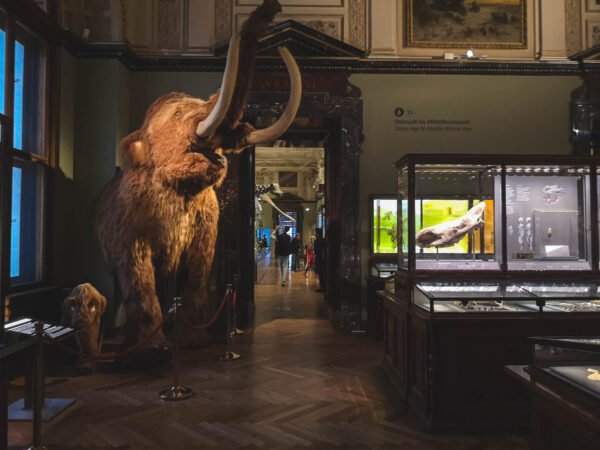
Mammoths in the Stone Age Hall. Photo by Alis Monte [CC BY-SA 4.0], via Connecting the Dots
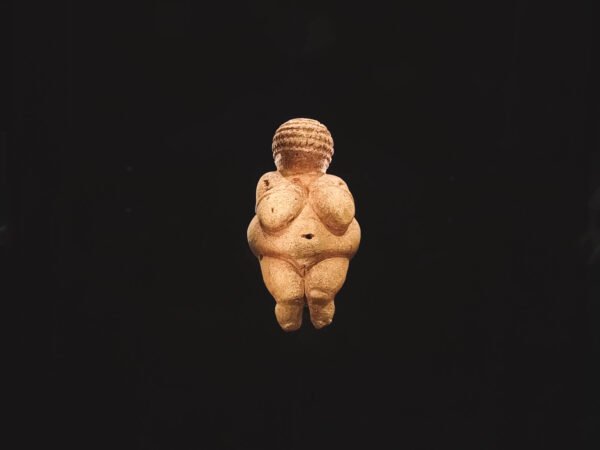
Venus of Willendorf. Photo by Alis Monte [CC BY-SA 4.0], via Connecting the Dots
Natural History Museum Vienna Details
- Location: Innere Stadt (1st district)
- Region: Vienna, Austria
- Address: Maria-Theresien-Platz, 1010
- Entrance: Main Entrance (Maria-Theresien-Platz)
- Opened: 1889 (19th century)
- Architectural Style: Renaissance Revival
- Entrance fee: €18 adults; €14 reduced; free under 19
- Tickets: Available online and at the box office
- Opening hours: Thu–Mon 9:00–18:00; Wed 9:00–20:00; closed Tue
- Phone: +43 1 52177
- Transport: U2/U3 Volkstheater; Tram 1, 2, D, 71 (Burgring)
- Accessibility: Step-free access via side entrance; lifts to all floors
Location
Current Exhibitions
- FREIGHTED — 500 years of collecting and exhibiting rhinos (until 12 January 2026)
- TWO VIEWS ON PLANTS — 3D Photography by Sebastian Cramer (until 01 March 2026)
- Safe sex: the comeback of sexually transmitted diseases — Exhibition at the “Narrenturm” (until 18 April 2026)
New permanent exhibitions:
- The art of the moulage — Immortalised clinical pictures (from 8 October 2025, Narrenturm)
- Ice Age Children and their World — The new children’s hall (from 21 May 2025)
- Toes, tails & tiny trails — Amphibians and reptiles (from 30 April 2025)
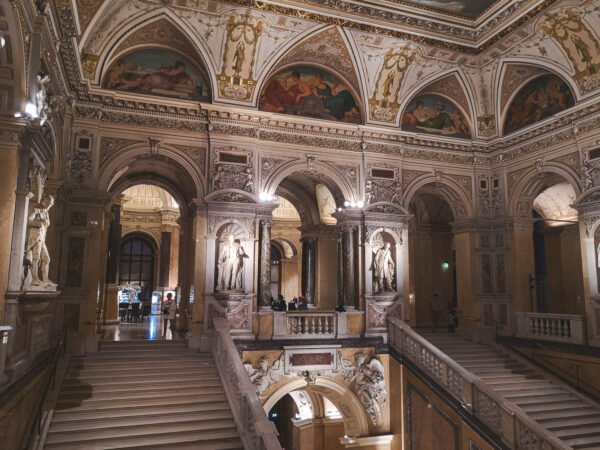
NHM interior staircase. Photo by Alis Monte [CC BY-SA 4.0], via Connecting the Dots
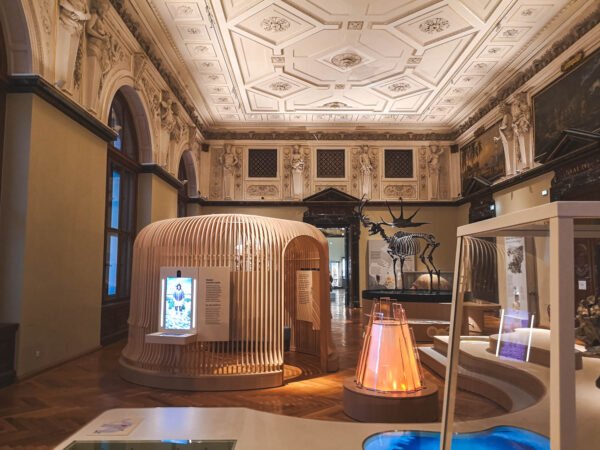
Hall 16 (Ice Age children and their world). Photo by Alis Monte [CC BY-SA 4.0], via Connecting the Dots
History & Development
The museum’s roots reach back to Emperor Franz I Stephan’s 18th-century cabinet of curiosities, later expanded by his successors into one of Europe’s premier natural history collections. By the mid-19th century, the holdings had outgrown the Hofburg; Emperor Franz Joseph I commissioned a purpose-built museum on the Ringstraße.
Designed by Gottfried Semper and Karl von Hasenauer, the twin museums—Natural History and Art History—were conceived as symmetrical Renaissance Revival palaces framing Maria-Theresien-Platz. Construction ran from 1871 to 1889; the Natural History Museum opened to the public on 10 August 1889. The interior followed a rational typological system: minerals and fossils on the ground floor, prehistoric and anthropological collections on the mezzanine, zoological specimens above.
Across the 20th century, the museum evolved from an imperial display case into a research institution. Post-1945 modernizations added new exhibition techniques while preserving the original architecture. In 2005 a full-dome digital planetarium opened on the roof, and ongoing renovations have refreshed halls with interactive displays, DNA labs, and augmented reality experiences—maintaining the core mission of public education and cutting-edge science.
Highlights
Venus of Willendorf. A limestone figurine carved around 29,500 years ago, discovered in Willendorf (Wachau Valley), Lower Austria in 1908. This 11 cm / 4.3 inch icon of Paleolithic art anchors Hall 11’s prehistory collection.
Meteorite Hall (Hall 5). The world’s largest and oldest public meteorite display, featuring the 247 kg / 545 lb Hraschina iron meteorite (fell 1751) and fragments from Mars, the Moon, and asteroid Vesta.
Dinosaur Hall (Hall 10). Life-size skeletons including Allosaurus, Iguanodon, and a cast of Diplodocus carnegii. The reconstructed Plateosaurus from Trossingen, Germany, remains a visitor favorite.
Roof Tour & Planetarium. Guided tours access the rooftop for panoramic views over the Ringstraße; the 8.5 m / 28 ft planetarium dome offers full-dome astronomy and nature films (separate ticket required).
Hall 39: Zoology. Historical taxidermy displays include extinct species—Steller’s sea cow, quagga, and passenger pigeon—preserved from the imperial collections, presented in original 19th-century cabinets.
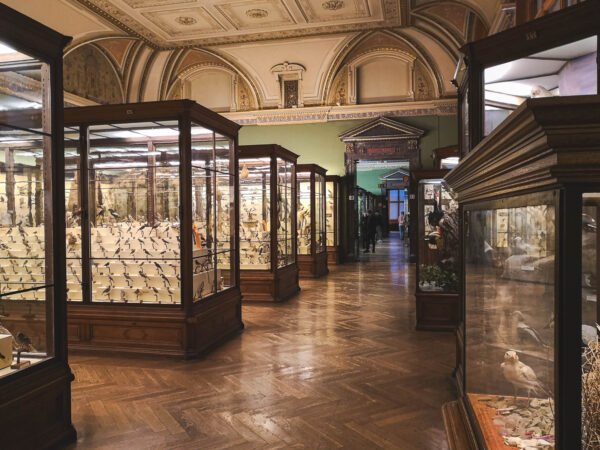
Halls 29-32 Bird Collection. Photo by Alis Monte [CC BY-SA 4.0]
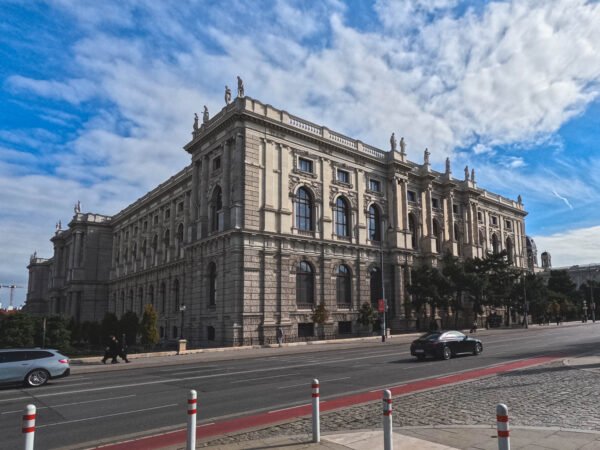
NHM from Museumstrasse. Photo by Alis Monte [CC BY-SA 4.0], via Connecting the Dots
Why Visit?
The Natural History Museum delivers something most modern science centers can’t: a direct line to 250 years of continuous collecting, research, and display. You stand before the actual Venus of Willendorf—not a replica—in a hall designed when Darwin’s ideas were still new. The meteorite collection predates spaceflight; the dinosaur skeletons were mounted when paleontology was defining itself. This isn’t nostalgia—it’s seeing how scientific knowledge accumulates, layer by layer.
The building itself rewards attention. The architects embedded natural history into the design: ceiling frescoes trace evolutionary thinking, marble columns showcase geological specimens, and the grand staircase places you within a typological system that reflects 19th-century Enlightenment ideals. Recent interventions—QR codes, interactive screens, DNA extraction demos—complement the original vitrines without altering them.
Locals value the Wednesday late opening (until 21:00) for quieter exploration, and the rooftop tours (bookable online) offer insider access beyond the public halls. Families find the dinosaur hall and hands-on “Micro Show” engaging for children, while researchers appreciate active research collections—many objects are still studied, not merely exhibited. Budget 2–3 hours for highlights, or a full afternoon to work systematically through all 39 halls. I love to spend a whole day here, it is the Hard Science museum after all.
Frequently Asked Questions
Where is the Natural History Museum Vienna?
On Maria-Theresien-Platz in Vienna's 1st district, directly opposite the Kunsthistorisches Museum.
When was it built?
Construction ran from 1871 to 1889; the museum opened to the public on 10 August 1889.
What are the opening hours?
Thursday–Monday 9:00–18:30; Wednesday 9:00–21:00; closed Tuesday.
What should I not miss?
Venus of Willendorf (Hall 11), Meteorite Hall (Hall 5), Dinosaur Hall (Hall 10), and the rooftop planetarium.
Is it accessible?
Yes—step-free access for wheelschairs-only via the side entrance, with lifts to all exhibition floors and accessible restrooms.
How long do I need?
Allow 2–3 hours for highlights; 4–5 hours to explore all 39 halls thoroughly.
Which public transport is best?
U2 or U3 to Volkstheater, then 5-minute walk; or tram 1, 2, D, 71 to Burgring stop.
Can I buy tickets online?
Yes—advance tickets available on the official website; skip-the-line entry recommended for weekends and school holidays.